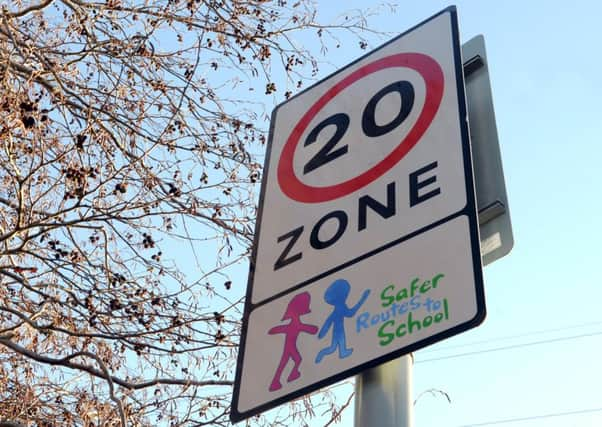Leaders: There are limits to how we enforce lower speeds


Anyone familiar with the frustration of driving around Edinburgh city centre will no doubt have despaired at the local council’s decision to introduce 20mph speed limits on 80 per cent of the capital’s roads.
Phase one of the project, which covers the city centre, will be rolled out this summer, despite objections from local drivers and Lothian Buses, which was upset about an increase to journey times.
Advertisement
Hide AdAdvertisement
Hide AdBut despite the controversy, the Scottish Government has now signalled its support for other councils who want to follow Edinburgh’s lead.
Fresh from the recent Forth Road Bridge crisis, transport minister Derek Mackay told The Scotsman that compulsory 20mph speed limits should become the norm in built-up areas across the country.
Mr Mackay, who has no plans to enforce the move, said it would improve driver compliance and help cut road casualties. And the transport minister says that funding should not be a stumbling block because 20mph schemes are not expensive to introduce.
While Edinburgh is the only city planning to cuts speeds to 20mph on most roads, mandatory 20mph zones have been introduced in Highlands towns such as Cromarty, as well as Cockenzie, Dunbar, North Berwick and Tranent in East Lothian.
But despite trials elsewhere, the uptake of 20mph zones has been patchy at best.
Introducing blanket speed restrictions of this type would affect us all. Like the smoking ban, it’s a significant change to our daily lives.
Of course, there are good reasons for adopting the measure. Road safety charities are correct to say that lowering the speed limit reduces serious injuries, as well as increasing the number of pedestrians and cyclists.
But there has to be an obvious reason to introduce a 20mph limit on designated roads. It would need to be in residential areas, around schools, and in areas where there are high numbers of pedestrians and cyclists.
Advertisement
Hide AdAdvertisement
Hide AdWhile striving for improved safety, we also have to keep urban areas moving and to keep the country moving. Speed and flow play important parts of any effective traffic management plan. Main routes can fall into the built-up area category, and it would not be beneficial to make them 20mph. That would only produce frustration.
One big help would be to remove confusion over when a 20mph zone is mandatory and when it is recommended. Those areas deemed appropriate for 20mph have to be mandatory. Otherwise, the piecemeal approach will fail.
Mr Mackay knows very well the need to keep the country on the move, oiling the wheels of industry. He was reminded of this responsibility frequently during the Forth Road Bridge closure.
If Scotland is to warm to his proposal, drivers need good reason to support the move and not feel they are the victims of an over-cautious approach that only introduces a new obstruction to our mobility.
Swinney’s challenging gamble
The Scottish Government’s budget has been passed. Obviously, that was always going to happen, despite the loud opposition inside and outside the chamber, which included a union protest at Holyrood.
Even John Swinney doesn’t deny that things are going to be tough. He has described the outlook as “challenging”.
His opponents warn of dire consequences for public services, and thousands of job cuts.
The true effects will become clear in the coming weeks.
The news yesterday was that there will be an extra £80 million for closing the attainment gap in schools. There was also money for primary health care and affordable housing.
Advertisement
Hide AdAdvertisement
Hide AdThe council tax freeze will continue, and there will be total revenue funding for local government of £9.5 billion, something local government umbrella organsiation Cosla says amounts to a 3.5 per cent cut.
Will the cuts be perceived as Westminster austerity, or the fault of the SNP administration for ruling out a tax rise? Perception will be important in terms of the electorate. With a Holyrood election in May, there could be a price to pay at the ballot box if the cuts bite harder than the Scottish Government anticipates.
Labour have stepped in with their proposal to put a penny on tax to protect services, and could attract support for their willingness to take direct action.
The shouting and arguing has been well played out, although no doubt it will continue until polling day. The reality of Swinney’s budget will be far more instructive.
And even the finance minister knows that the budget he has pushed through is a gamble.